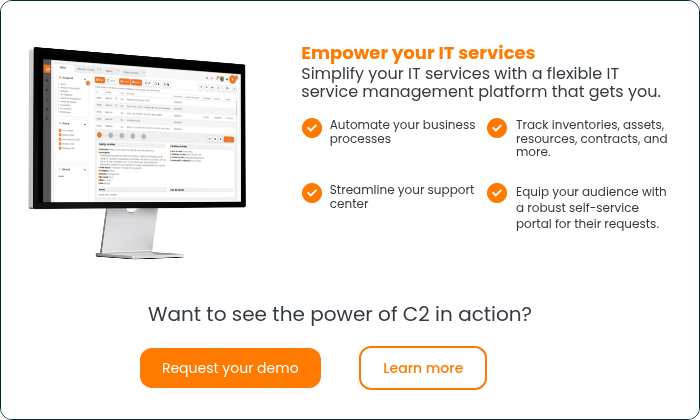ITIL 4 launched several years ago, but it is still something of a mystery to many business and IT leaders. You might have heard that it is not any different from ITIL 3 and that it isn’t worth the switch. Or you might have heard that it is too big a switch and not worth the effort of getting an entire organization moved over to the new framework. Neither is true.
There are some pretty meaningful changes and a lot to like about ITIL 4. Is it worth adopting? We think so, and many companies out there agree. One of the more recent surveys of IT service management professionals conducted in 2020 found that 20 percent of their organizations had already begun their migration to an ITIL 4 framework, and a further 32 percent planned to start soon.
This article will explain what is different in ITIL 3 vs. ITIL 4 and why. It will also point out some of the key reasons you might want to upgrade to ITIL 4 methodologies for your organization.
Change is nothing new, and every ITIL version introduces new features
The original Information Technology Infrastructure Libraries (ITIL) sequence from the 1980s was unnumbered. But the major millennial upgrade to the framework in 2001 was significant enough that the publishers decided to brand it ITIL 2. Version 2 consolidated ITIL best practices to ten key processes and introduced the now-common service desk model.
ITIL 3 was unveiled in 2007 and introduced the concept of the service lifecycle. It also expanded the set of key processes from ten to over twenty. ITIL 3 then received a substantial update in 2011 and has often since been referred to by that year—ITIL 2011. That update notably introduced the Business Relationship Management process.
ITIL 3 vs. ITIL 4—What’s the real difference?
Version 4 of ITIL is still a set of best practices for IT service management (ITSM). That hasn’t changed. But this latest version is updated to aid organizations whose current goals also involve digital transformations.
Beyond that specific emphasis, ITIL 4 encourages practitioners to take a holistic view of IT. For example, it places a new focus on the concepts of costs, risks, outcomes, and overall value.
Each ITIL process is still important, but Version 4 places a greater emphasis on seeing the total value generated by those processes for your organization and customers. In addition, ITIL 4 encourages practitioners to remove siloed processes and increase communication and collaboration among service teams and other business units.
ITIL 4 also defines what it terms its 7 Defining Principles:
- Focus on value
- Start where you are
- Progress iteratively with feedback
- Collaborate and promote visibility
- Think and work holistically
- Keep it simple and practical
- Optimize and automate
These are meaningful changes, but the largest new concept introduced in ITIL 4 is the Service Value Chain.
The service value chain is an optimized approach to service delivery
The Service Value Chain takes the goals of ITIL 4 discussed above and presents a framework for achieving them as effectively as possible. The six core elements of the Service Value Chain are:
Plan
You need to foster an understanding throughout your organization of the current state of your IT and service delivery capabilities and the future direction you want to take all of it. The planning element lays the foundation for all following actions your organization will take.
Improve
ITIL 4—with its goal of supporting digital transformation—emphasizes continual improvement. Specifically, the improvements you can make in aligning your service delivery practices with your overall business objectives.
Engage
Even in the early days, ITIL practitioners understood that these best practices only work if the organization engages with them end-to-end. The Service Value Chain makes this explicit with its Engage phase. Your stakeholders need to communicate and collaborate to ensure you’re constantly moving closer to your goals. Under ITIL 4, you’ll have clear guidelines for how to make this happen.
Design & Transition
Proper planning, engagement, and a focus on constant improvement will help you design the best services possible. You will have a clear understanding of your customer’s requirements and how to meet them.
Obtain/Build
Providing the service your customer needs requires the timely acquisition and use of resources, including IT assets, human resources, funding, and other key elements. ITIL 4 guides you in obtaining and utilizing those resources in the most effective ways possible.
Deliver & Support
Once built, you still need to deliver and support the service appropriately. A large proportion of the value delivered by the Service Value Chain comes from this element.
Why You Should Use ITIL 4
Are you thinking about getting your team ITIL-certified? Are you weighing whether the differences in ITIL 3 vs. ITIL 4 warrant making the transition to the new version? Your decision point should be whether the change will create more long-term value. These are the Four Dimensions an ITIL 4 organization can expect to improve and which you should assess the importance of before making any major decisions about your ITIL implementation.
Organizations & People
ITIL 4 will help you structure how your people and your organization operate. As a result, you’ll be better positioned to break down institutional silos that would otherwise prevent valuable communication and skills sharing. Keeping your company flexible and agile is one of the most important things you can do if you’re making a digital transformation.
Information & Technology
ITIL 4 provides a platform to develop your IT infrastructure, skills, institutional knowledge, and strategic partnerships. You’ll be able to assess new technologies and processes, so you ensure your team will use them effectively without introducing unnecessary risk or complexity.
Partners & Suppliers
ITIL 4 does more than help you improve and align your technology. Version 4 methodologies help you manage your business partners and third-party affiliates, so you maximize value for everyone involved.
Value Streams & Processes
ITIL 4 processes and the service desk tools that support them will provide you with end-to-end insights on activities within your organization. It will become easier to identify inefficiencies and waste. As a result, you’ll be able to transform more quickly and still stay aligned with your company’s strategic goals.
Forwarding-looking Organizations Should Consider ITIL 4
The changes between ITIL 3 vs. ITIL 4 are meaningful. However, every organization needs to consider whether the new framework, Service Value Chain, and ITIL 4’s focus on digital transformations are the right fit for where they want to go.
Today’s digital transformations will require you to have the right tools in place, so your meaningful changes don’t stall out tomorrow. C2 offers a powerful service desk that can grow and adapt with your organization.






